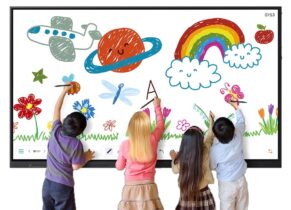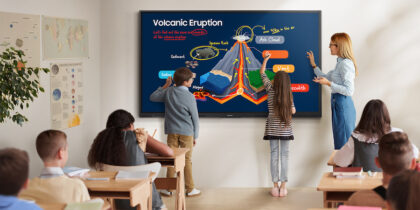Looking for new ways to improve student engagement in your classroom? Try podcasts.
These serialized audio broadcasts offer insight into current events, tips on specific technologies or subject areas and a fun way to get students involved in the creation of their own learning.
Why Podcasts Increase Student Engagement
Much of the research on whether students are more engaged when using podcasts and other multimedia tools has so far focused mainly on college students. It’s been shown that some students, especially those who reported low levels of interest in the course, are more engaged when using podcasts in combination with traditional education tools. Until more research is done in K-12, we can assume that these results translate to younger students as well.
We do know that listening is a more active way of consuming content than reading text, and research has shown that it can produce better recall than reading. Additionally, our students are used to consuming audiovisual materials outside of class, so providing them with this opportunity in class can help increase their interest in the assignment.
What Subjects Work With Podcasts?
Because there are so many podcasts available — and because teachers have the ability to create their own — these new education tools can be used in nearly any subject with almost any age group.
In language arts, podcast recordings of plays and books can provide audio cues to students struggling with reading the text. This is especially effective with texts written in older dialects, such as Shakespeare’s works, or even books that use completely invented languages, such as the novel “Riddley Walker.” Younger students can also read along with a podcast to help them achieve higher reading levels and improve comprehension.
Social studies students can benefit from following podcasts about current events, exploring differing perspectives through guided lessons. This type of assignment allows students to improve media literacy by examining bias and the role previous experiences play in our reactions to specific information. Some teachers are using popular podcasts such as “Serial” and “This American Life” as current primary texts to give students insight into current events. Then they can design lessons that incorporate the historical events and developments that affect the subjects of these podcasts.
Foreign language students can practice listening comprehension and gain valuable cultural insight through podcasts produced in the countries where the target language is spoken. This exposure to native speakers and different dialects and speech patterns can help increase students’ understanding and enjoyment of the language they’re learning, helping them not only perform better in their current class, but also encouraging them to study the language further or travel to a country where that language is spoken.
Finally, students in nearly any subject can create podcasts in which they explore the way they solved a math problem, conducted a science experiment or explored a programming concept.
How Teachers Can Create Their Own Podcasts
Most tablets and Chromebooks have built-in tools that allow teachers to record their own podcasts or videos for students to use. This tactic can be used to build a set of instructional podcasts that students can use when they’re absent or when they need to review learning material before a test.
Teachers can even share these podcasts for other teachers and students to use in their classrooms. Whether created by teachers, students or professionals, podcasts can offer great benefits for learning and student engagement.
Using technology in the classroom can not only improve engagement, but also increase collaboration and better prepare students for the future. Here are some tips and tricks on how to make the most out of your classroom technology.








